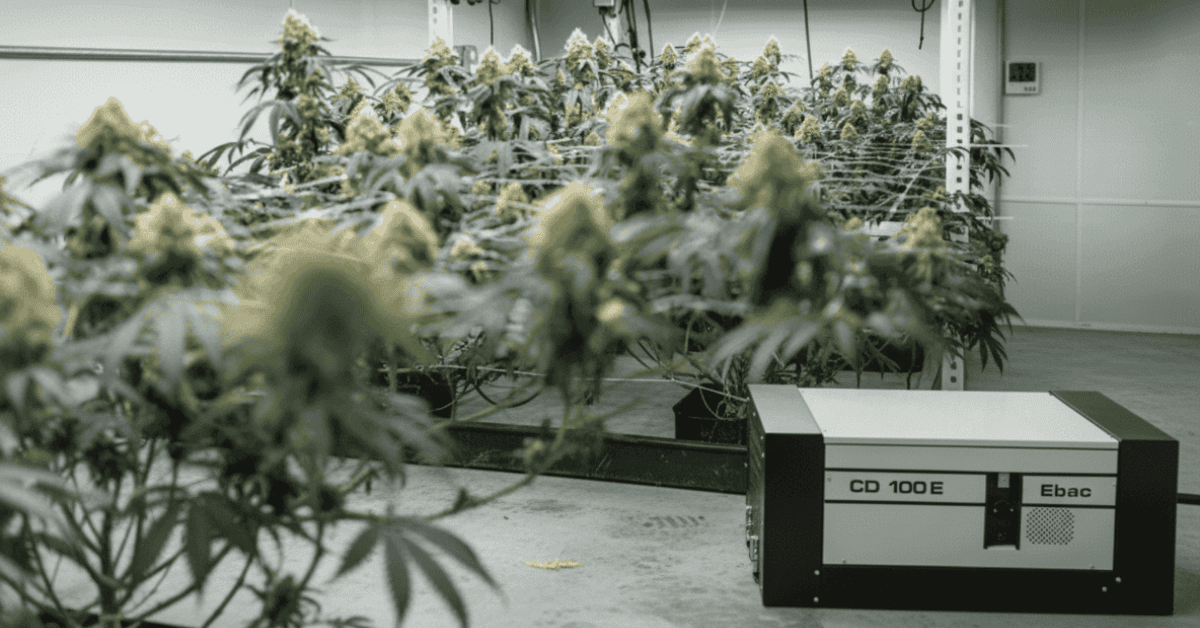 The importance of controlling a grow room’s climate can’t be stressed enough. This is true for every indoor garden, from the garage-scale operation to the largest of warehouses.
The importance of controlling a grow room’s climate can’t be stressed enough. This is true for every indoor garden, from the garage-scale operation to the largest of warehouses.
Since nobody in their right mind goes into production seeking to grow low-quality flowers, we’ll assume you’ve invested in proper lights, ventilation, dehumidifiers, and AC units. However, what gets lost in the mix sometimes is a controlled way to introduce humidity into a space. For a more precise solution, explore our commercial grow‑room humidifiers that are designed to maintain optimal RH in cannabis grow spaces.
Telltale signs of leaves curled upward or brown-tipped leaves might mean your garden is lacking the Relative Humidity (RH) it needs to thrive. This is most common with young seedlings, but can also occur in more mature plants in extreme cases. To understand how to deal with this, it’s best to also understand what we’re dealing with and why.
First, a couple of Industry stats for context:
- Over 80% of cannabis cultivators report that strict humidity control significantly helps in preventing or resolving mold issues in their grow rooms.
- Recent advancements in climate control technology—such as automated sensors and IoT devices—have enabled growers to achieve precise adjustments, resulting in reported yield improvements of up to 20%.
- High-tech systems that integrate temperature and humidity control can reduce energy costs by 40–50% compared to older, manual setups.
The Root of the Problem
In most cases, RH problems arise in young plants and seedlings with underdeveloped roots. This is because the plant can’t yet take up enough water to support itself, so most of its water intake comes through the leaves. If humidity levels are too low you’ll end up with leaves curling upward like little spoons. Or, if roots are a bit more developed, low RH will make the young plant drink excessively which will often lead to “nutrient burn,” characterized by brown tips on your leaves.
A higher RH in the early going keeps a plant healthy while the roots are developing and promotes vigorous growth which will translate to higher yields later. This is why some growers choose to start their seedlings in propagators.
Relative Humidity Explained
As simply as possible, relative humidity (RH) is the amount of water vapor possible in the air at a certain temperature – expressed as a percentage. The higher the temperature, the more vapor it can hold. So it stands to reason, that the lower the temperature the less it can hold. Understanding this is important to know how you can address RH in your growing space.
RH has a sort-of yin yang relationship with temperature in that raising or reducing it has the opposite effect on RH. Raise the temps with the same amount of water vapor in the air and RH goes down, lower the temps, RH goes up.
Knowing this, means we have two different ways to increase RH, either:
A) Increase the amount of water vapor in the air without affecting temperature, or
B) Lower temperature with no change to existing water vapor
Use our CFM calculator to figure out the airflow and humidifier capacity your room needs based on its length, width and height. For a deeper dive into ventilation and calculating air‑exchange rates, see our grow‑room ventilation best practices guide.
Additional Data on Growth Stage Humidity Requirements
- Seedlings & Clones: Maintain 70–80% RH to support weak root systems and optimal water absorption.
- Vegetative Stage: Aim for 40–70% RH; balancing transpiration without stressing the plant.
- Flowering Stage: Lower to 40–50% RH to prevent mold and bud rot, with some growers reducing it further (below 40% in the final weeks).
Dealing with Low RH
OK, as promised, here’s a quick-and-dirty rundown of five easy ways to deal with low RH in your room.
1. Lower the Temperature
It’s almost unfair to include this one since it’s fundamental to how RH works. So, as a bonus, make sure your grow room is sealed and insulated from the outside to avoid even incremental external influence on temperature since temps and RH go hand-in-hand.
2. Hang Wet Towels or Sheets
If you’re happy with the temperatures in the room, then adding water vapor may be a better option. Hanging towels is not a long-term solution and rings of a basement/garage method, but your plants don’t care where the RH came from. This can help out in a pinch.
3. Water Bowls Near Air Intakes
Placing a bowl of water with air flowing over the surface will promote evaporation, increasing the amount of water vapor in the air without affecting the overall temperature. To further increase the effectiveness of this, add a sponge to the bowl or trays to increase surface space which will add vapor to the air even quicker.
4. Add Larger Plants to the Room
Larger plants perspire more than seedlings which will increase the overall RH in the room. This option may not be for everyone, especially where garden space is at a premium.
5. Introduce a Humidifier!
The ideal option is to introduce a humidifier with automated climate controls. With any of the previous options, the addition of humidity or lowering of temperature adds an approximation of RH value rather than a concise amount. For complete control, add a humidifier.
OK, so really this was just a long way of saying, “Use the right tool for the job.” But if you’re running into problems with low RH, hopefully, this helped you understand the causes of the problem and gave you some stop-gap options until you can make the investment in industrial humidifiers. Happy growing and as always.
Bonus Tips for Enhancing Climate Control
- Digital Monitoring: Emphasize the use of digital hygrometers and smart climate controllers that adjust settings in real time, ensuring the grow room stays within the optimal RH range.
- Balancing Temperature & Humidity: Remind growers that since warmer air can hold more moisture, adjusting temperature settings is a dual strategy for managing RH effectively. Also consider our cannabis air purifiers systems to remove contaminants while maintaining optimal airflow to keep everything in balance.
- Preventive Maintenance: Include a note on regular calibration and maintenance of sensors and HVAC equipment to ensure consistency and prevent crop loss.
Choosing the Right Humidifier (Sizing & Types)
To learn how to choose and size a humidifier, check out our best humidifier for grow room setup guide and discover why humidifiers are essential for seedlings.






